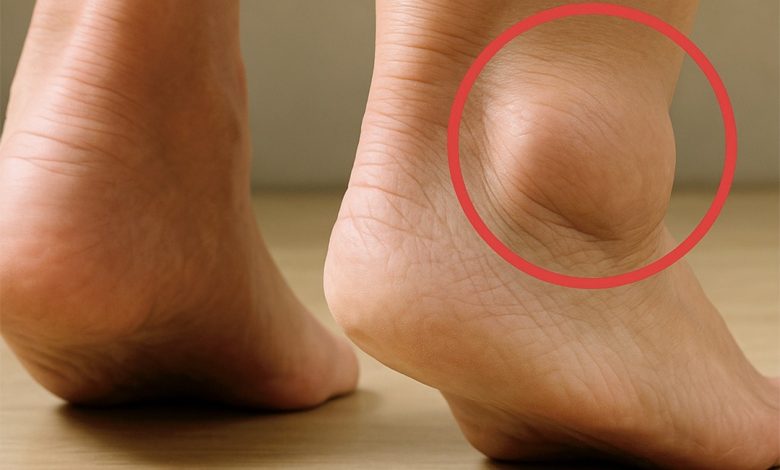Swollen Legs: Symptoms, Causes, and How to Find Relief

Leg swelling, also called peripheral edema, is a common and often uncomfortable problem. It happens when fluid builds up in the tissues of your lower legs. Sometimes, a little swelling isn’t a big deal, but if it happens a lot or is very bad, it could mean there’s a more serious health issue that needs checking out. Knowing the signs and what you can do can help you manage this problem and know when to see a doctor.
ADVERTISEMENT
Why Do Legs Swell?
Swelling in your legs often happens because fluid collects there. This can be due to several reasons, such as not moving enough, an injury, standing for a long time, or certain health conditions. Here are some common causes:
ADVERTISEMENT
- Sitting or Standing Too Much: If you sit or stand for long periods, your blood might not flow as well, causing fluid to gather in your legs.
- Injury or Infection: Things like sprains, bruises, or infections can cause swelling in just one area.
- Heart, Kidney, or Liver Problems: These organs are really important for managing fluid in your body. If they aren’t working right, it can lead to swelling.
- Vein Problems (Venous Insufficiency): Your veins have tiny valves that help push blood back to your heart. If these valves are weak, blood can pool in your legs.
- Medicines: Some medications, like certain blood pressure pills (calcium channel blockers) or pain relievers (NSAIDs), can make your legs swell.
What Does Swollen Legs Look Like?
While swelling is the main sign, other things might happen too:
ADVERTISEMENT
- Tight Skin: The skin over the swollen area might look shiny and feel stretched.
- Pitting: If you gently press on the swollen area, it might leave a small dent that takes a few seconds to disappear. This is called “pitting edema.”
- Discomfort or Ache: Your swollen legs might feel heavy, achy, or sore.
- Warmth or Redness: If your swollen leg also feels warm or looks red, it could be a sign of an infection or inflammation.
- Trouble Moving: If the swelling is bad, it can be painful or hard to walk or move around.
Important: “If you experience sudden, severe swelling or chest pain alongside leg swelling, seek emergency care immediately,” This is very important because these symptoms “could indicate deep vein thrombosis (DVT) or heart failure.” These are serious conditions that need urgent medical help.
When Should You Talk to a Doctor?
You should definitely see a healthcare professional if:
- The swelling doesn’t go away even after you try some simple changes at home.
- Only one leg is swollen, which could point to a blood clot (DVT) or another condition called lymphedema.
- You notice weird bruising, changes in skin color, or pain.
- The swelling gets much worse quickly or makes it hard for you to do your daily activities.
How to Treat Swollen Legs
There are a few ways to deal with swollen legs, from simple changes at home to medical treatments.
Simple Lifestyle Changes:
- Lift Your Legs Up: Try to raise your legs above your heart several times a day. This helps the fluid drain away.
- Move Around: Regular movement helps your blood flow better and stops fluid from building up.
- Wear Compression Stockings: These special socks gently squeeze your legs, which helps improve blood flow and reduce swelling.
- Eat Less Salt: Too much salt can make your body hold onto extra water. Try to choose foods that are low in salt.
Home Remedies:
- Use Cold Packs: Put an ice pack (wrapped in a cloth) on the swollen area to help with inflammation and discomfort.
- Gentle Massage: You can gently massage your leg starting from your ankle and moving upwards. This can help move the fluid.
- Drink Enough Water: Staying hydrated actually helps your body get rid of extra salt and can prevent swelling caused by not drinking enough water.
Medical Help:
- Diuretics: These are medications your doctor might prescribe to help your body get rid of extra fluid through urination.
- Treating the Root Cause: If your swelling is due to another health problem like heart disease or kidney issues, treating that problem will help with the swelling.
- Physical Therapy: Sometimes, specific exercises taught by a physical therapist can help improve circulation and reduce swelling.
How to Stop Swollen Legs from Coming Back
The best way to avoid swollen legs is to prevent them from happening in the first place. Here are some tips:
- Keep Moving: Try not to sit or stand still for long periods. Get up and move around often.
- Keep a Healthy Weight: Carrying extra weight puts more pressure on your legs and can make it harder for blood to flow well.
- Eat Good Meals: Include foods rich in potassium, like bananas, spinach, and avocados, in your diet. These can help balance out the salt in your body.
- Check Your Medicines: Talk to your doctor about any side effects your medications might have, including leg swelling.
Final Thoughts
Swollen legs can be anything from a minor annoyance to a sign of something more serious. By noticing the symptoms early and taking steps to prevent them, you can feel better and keep your legs healthy. If the swelling keeps happening or gets really bad, don’t hesitate to talk to a doctor for personalized advice.
Your legs do a lot for you, so it’s important to take care of them!




